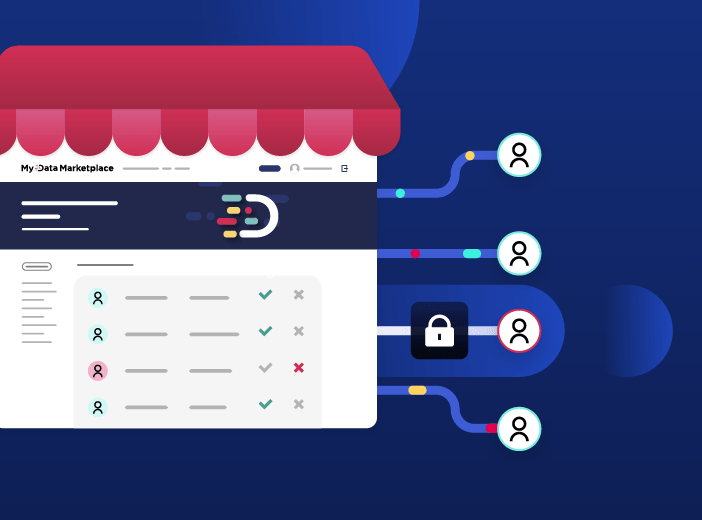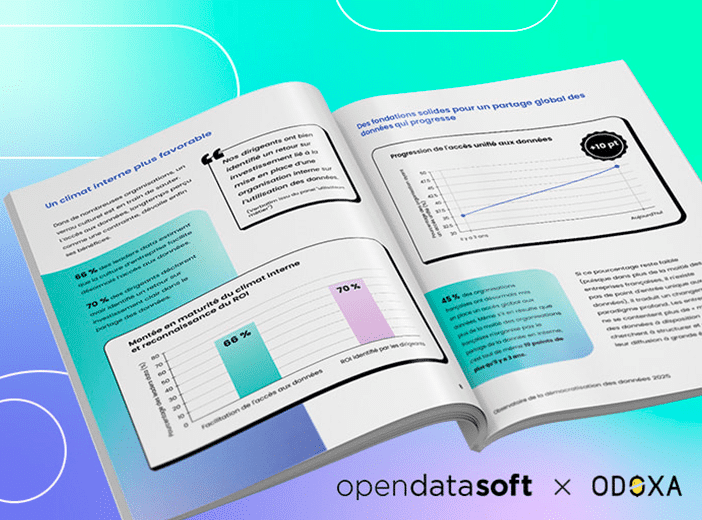Glossary
Open data portal
An open data portal is an online portal used by both public and private organizations to share data externally with their audiences.
88% of decision-makers say that better use of their data is key to organizational growth, according to Opendatasoft research. Sharing data externally via open data is a critical part of turning it into value. But to optimize the effectiveness of open data organizations need to make it easy and seamless for stakeholders to access and reuse their data.
That’s where open data portals come in. What are they? Who uses them? What are the benefits?
What is an open data portal?
Open data portals are digital hubs where external stakeholders (citizens, consumers, partners, other organizations) can access open data. Normally they are delivered as websites or as apps. Once a portal has been created, it provides access to a range of data published by the organization, along with tools to help users better understand and interact with it. These include data visualizations such as dashboards, interactive reports, maps, graphs, or other graphics.
Open data portals should deliver on multiple objectives:
- Transparent communication: Organizations that set up an open data portal, whether in the public or private sector, are granting everyone access to their information, creating transparency and engagement.
- Regulatory compliance: Many countries specify that organizations, particularly in the public sector, or in industries such as energy and transport, make key data available to all. Open data portals aid this objective and also meet requirements under the US and UK Freedom of Information Acts.
Aiding data democratization: open data portals should make it easy for all users, whether they are experts or not to access, understand and reuse data through tools such as data visualizations.
Who uses open data portals?
When it comes to open data portals it is important to differentiate between those that produce the data and those that consume it.
Data producers are the organizations that make information about themselves available to the public and other stakeholders. They may be local authorities, public institutions, businesses or other types of organization.
- Data consumers are the people who access that information. They could be:
- Employees, potentially using the information in their jobs.
- Customers and consumers, learning more about particular brands or companies.
- Citizens, better understanding the activities of public bodies to monitor performance and aid transparency.
- The media, informing the public.
- Partners, using a company’s data within their business or ecosystem
The idea is to allow everyone to use the available data, whether or not they have specialist data skills.
Open data portals democratize data access. Anyone, from public institutions, private organizations, to members of civil society can both access and share open data. They can use datasets to create new services, aggregate data with other sources, or add it to other websites or apps.
For example, a start-up focused on waste management might create an app listing recycling centers operating in each city/neighborhood. To do this they can simply take a data feed and reuse information from municipalities’ open data portals.
To aid this type of reuse, open data portals normally include tools such as APIs, iFrames, widgets and basic exports or file downloads.
What are the benefits of open data portals?
By providing structure to information, open data portals transform raw data into intelligible information, and facilitate its reuse as a means of creating value. Organizations launch open portals for multiple reasons:
- To strengthen transparency: Open data portals allow organizations to share information about their performance and commitments (such as around sustainability) with users and consumers. The ultimate goal is to build relationships of trust with these audiences, to aid engagement, understanding, employee attraction and overall brand reputation.
- To facilitate decision-making: By itself, data has no value for an organization. Instead, it creates value when it is shared and analyzed and used to help companies make better, more informed decisions. To achieve this it is vital to ensure that clear, accessible and understandable information is made available to all. That’s exactly what an open data portal does.
- To develop new services: Sharing the right information with the right people allows organizations to create new services. It helps them develop their company globally and potentially build new revenues.
- To bring teams together: Greater transparency breaks down barriers between departments and teams and enables greater collaboration across the whole company.
Examples of open data portal use cases
Organizations across the public and private sectors are benefiting from open data portals. Here are some examples from amongst the Opendatasoft customer base:
- OSBM: The North Carolina Office of State Budget and Management (OSBM) provides decision-makers and citizens with comprehensive statistical information about the state. This helps improve decision-making and engagement.
- Kering: Kering uses data to measure its environmental impact through its Environmental Profit & Loss (EP&L) tool. The information helps the company improve its supply chain and processes, with a view to sustainable development.
- BPCE Group: French bank BPCE decided to set up an open data portal as part of its digital transformation. The goal was to make data more easily accessible for the company’s customers, employees and partners. Among other benefits, it allows the banking group to share its job offers with new talent.
- UKPN: UK Power Networks uses its open data portal to strengthen relationships with stakeholders across its ecosystem, ensuring resilience and helping drive decarbonization.
Organizations are currently using open data portals for a variety of reasons: to expand their CSR commitments, facilitate internal processes and simply better communicate with their audiences.
Learn more

Everything you need to know on data products for business users
It can be hard to understand exactly what a data product is, given the many ways that the term is defined and applied. To provide clarity this article provides a business-focused definition of a data product, centered on how it makes data accessible and usable by the wider organization, while creating long-term business value.


